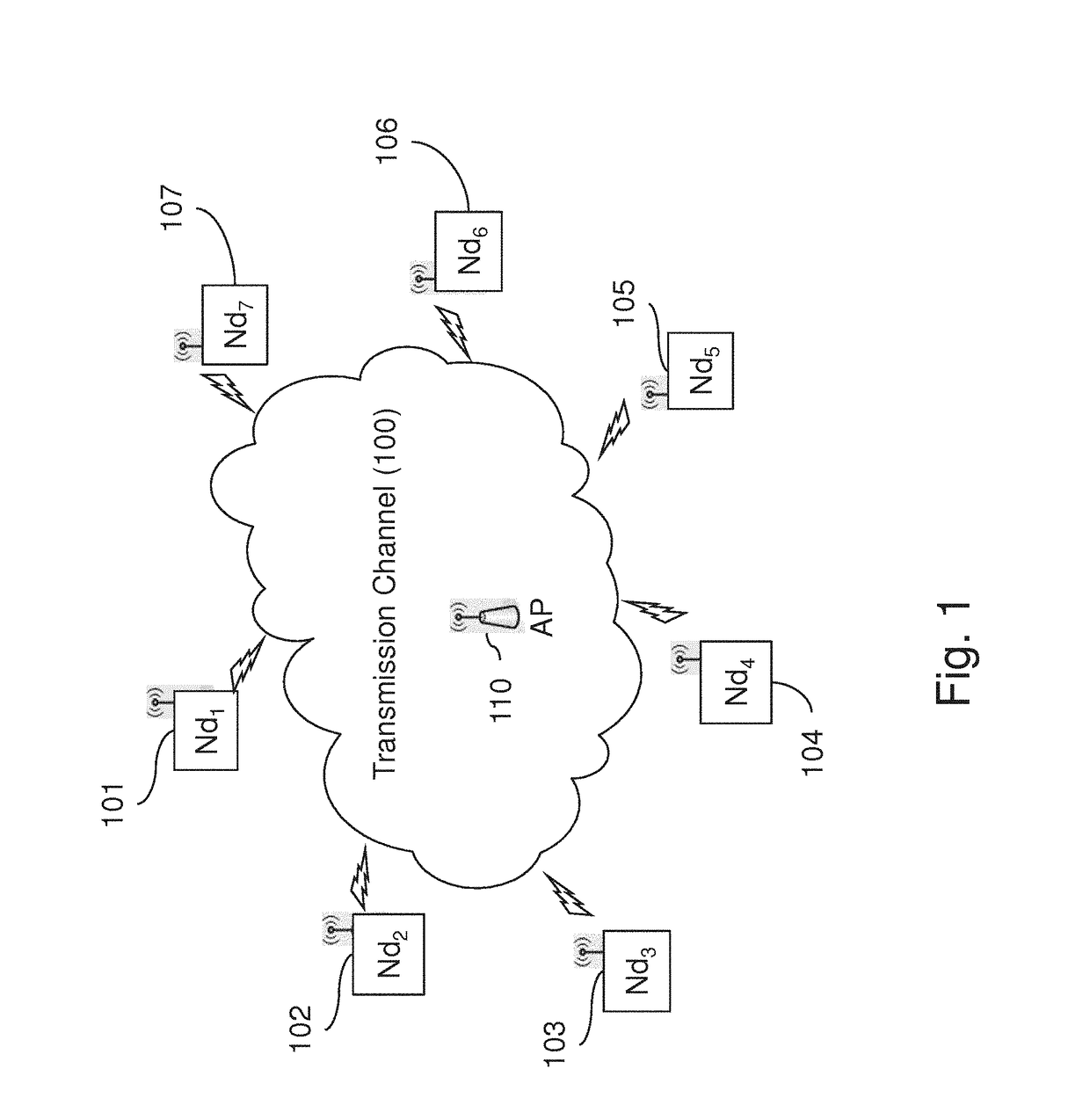Trigger frames adapted to packet-based policies in an 802.11 network
- Summary
- Abstract
- Description
- Claims
- Application Information
AI Technical Summary
Benefits of technology
Problems solved by technology
Method used
Image
Examples
third embodiment
[0315]In a third embodiment, the threshold value (either the predetermined maximum small packet size or the predetermined maximum overhead) can be dynamically determined using a learning mechanism as described below with reference to step 804.
[0316]FIG. 8 illustrates an exemplary process for the AP to generate a Trigger Frame dedicated to collection of small packets (SP), also referred below to as SP Trigger Frame or SP TF.
[0317]Such a SP trigger frame is built in order to force the nodes to send only small packets in specific RUs (preferably all the RUs or all the Random RUs defined by the SP TF). To achieve that, the SP TF includes an indicator specifying such restriction to small packets.
[0318]Various implementations may be contemplated.
[0319]For instance, the restricting indicator specified in the SP TF may be a predetermined maximum small packet size or maximum overhead providing an upper bound when evaluating whether packets are small packets or not. Such information may be pr...
first embodiment
[0342]In a first embodiment, the number of resource units, the predetermined maximum small packet size or maximum overhead and the TXOP duration are fixed and known by all the nodes. Step 804 only retrieves these values. For instance, a maximum small packet size is set, typically to 256 bytes; the number of RUs dedicated to small packets is equal to the total number of possible RUs (typically 9 RU per 20 MHz channel) in the composite channel (typically 40 Mhz composite channel will contain 18 RU); and the TXOP duration is set to fit the predefined maximum small packet size given the number of RUs.
second embodiment
[0343]In a more complex second embodiment, step 804 uses predefined abacus to obtain a value for those TF characteristics.
[0344]For instance, the number of RUs dedicated to small packets may be set according to a predefined abacus (typically linking the number of SP RUs to the number of nodes in the cell depending on the AP type: hot spot, home, enterprise, etc.).
[0345]A similar mechanism may be used to determine the maximum small packet size.
[0346]Again, the TXOP duration may be set to fit the abacus-based maximum small packet size given the abacus-based number of RUs.
[0347]The abacus may be determined using simulation models or real measurement during evaluation tests of the access point implementing the invention.
[0348]In a third embodiment, a learning mechanism is used during step 804 to determine the TF characteristics.
[0349]For instance, the number of RUs dedicated to small packets may be determined as a function of the ratio of used RUs during the last TXOP dedicated to small...
PUM
 Login to View More
Login to View More Abstract
Description
Claims
Application Information
 Login to View More
Login to View More - R&D
- Intellectual Property
- Life Sciences
- Materials
- Tech Scout
- Unparalleled Data Quality
- Higher Quality Content
- 60% Fewer Hallucinations
Browse by: Latest US Patents, China's latest patents, Technical Efficacy Thesaurus, Application Domain, Technology Topic, Popular Technical Reports.
© 2025 PatSnap. All rights reserved.Legal|Privacy policy|Modern Slavery Act Transparency Statement|Sitemap|About US| Contact US: help@patsnap.com



